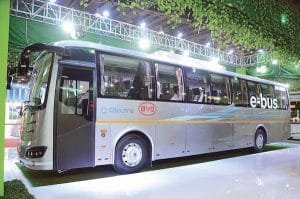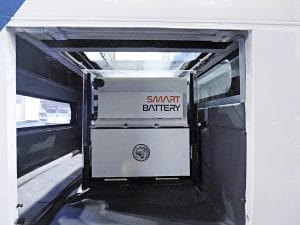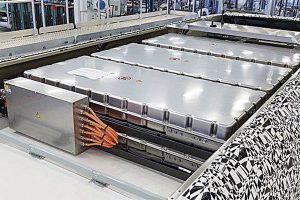
The Covid pandemic could turn the tide in favour of electric buses post addressing some of the foremost challenges, including those that pertain to the operating environment.
Stoy by Deepti Thore
The Covid pandemic has completely altered the outlook for buses. It has almost overhauled any outlook that held truth before its onset, and could set the road for buses that offer better value to the operators; enough to acquire them in the first place, and extend a sense of safety and stability to those who travel in them. An interesting part of the equation is, the higher preference electric buses could get in the Covid environment as the world anticipates a second wave and a third wave. If a vaccine would just save the world from the brink of successive virus breaks, it is buses that would play an important role in helping the return of sanity. Electric ones especially. So, as the CV industry struggles to attract new bus buyers, a potential shift from public transportation to private transport is adding to the challenge no doubt. Therefore, a big challenge for bus operations would be to address challenges like overcrowding of buses and difficulty in maintaining social distancing.

The other challenges include inadequate buses, longer waiting time and anxiety of travelling in a closed environment. If electric buses could help without increasing tailpipe emissions, they could also help address issues like supply chain constraints by the virtue of them having less number of moving parts. Well! It isn’t as easy as it sounds. Supply chains can be extremely complex, and given the current geopolitical situations, a lot of critical components still continue to be imported despite big strides in local approaches. Despite the announcement of big-ticket schemes like ‘Atmanirbhar Bharat’, components like battery cells, motors and inverters continue to be imported. High torque motors especially. This is one challenge area where a joint effort by the industry and the government could yield the best and most speedy results. Some of the other technical challenges faced by e-buses being the vehicle range, cost, battery replacement cost, battery pack life and charging. There is also a big potential in terms of improving the viability of e-buses. This would include a lot of technological improvements in terms of battery, improving efficiency, integration and optimisation of each and every aggregate of buses to get a better life, reduced battery cost, longer battery life, better thermal management and higher durability and reliability of various components and systems.
Indian environment
For battery sizing, the Indian environment poses a big challenge. There are very high traffic conditions. The extent of congestion could be such that the normal average speed of vehicles could be very low. This would translate into a unique challenge for the operate-ability of an e-bus. A solution to which would lie in turning the situation to its advantage. As a tropical country, the temperatures in India during the days are often high and vary. In the evening, they fall, making for a considerable change throughout the day. Thus, traffic, weather and air-conditioning usage are some of the most significant factors that influence energy consumption, and would make important parameters for an electric bus in terms of its range and battery sizing. Energy is majorly consumed for air-conditioning of a bus (26 per cent). It is an energy lost as it can’t be recovered in terms of the kilometers a bus runs. In an electric bus, such a captive source of energy consumption or a source of parasitic energy loss matters quite a bit as it influences its range. So, getting the focus on the range of an e-bus, it is essential to see how such a bus could run on all routes and get charged during breaks. In India, authorities don’t seem to be very comfortable with opportunity charging, which is claimed to be good for optimising the battery size. They instead seem comfortable with overnight charging, which poses a lot of challenges in terms of battery sizing and vehicle cost.

Stray instances of e-buses being charged with the use of a diesel generator in the absence of a suitable grid network is yet another major challenge that needs to be worked on too, and on a priority basis. In India, there is a low supply of buses as compared to any international competitors. The sector seems to have been ignored somewhat since the advent of JNNURM in India. FAME I and II are the largest national level programs for increasing e-bus supplies while JNNURM has been further engineered into AMRIT. Cities with well functioning transport systems globally have 100-200 buses per lakh people while most Indian cities are far below 50 buses per lakh people which is not up to the mark. In India, limited participation was observed in recent bids while many tenders were cancelled due to higher than expected bids. There are currently 8,30,000 buses in operation in India between the urban, intercity, public, private and other buses. To move from 8,30,000 in 2020 to 25 percent e-buses by 2030, the numbers are quite big in terms of investment that is required. It will cost Rupees-one crore to Rupees-two crore per bus and around 2-5 lakh buses would be required as e-buses by 2030.

Key drivers for EV investments
To drive the investment in EVs, and especially e-buses certain drivers would need to be firmly put in place. These, according to Gerald Ollivier, Lead Transport Specialist, Transport Global Practice, The World Bank, include a thorough understanding of the core economics of e-bus operations. With BSVI norms coming into force, STUs are looking at managing the expenditure on charging cost, infrastructure cost and associated interest. They are looking to reduce the cost incurred in fuel and maintenance of the e-buses. With e-buses having the same TCO as BSVI AC bus, with the subsidy provided, the cost of e-buses has the potential to be less than the cost of running a BSVI AC bus. With many STUs and municipalities operating non AC buses, the equation gets complicated. The more relevant comparison would need to be with non-AC BSVI buses which cost 30 per cent lower than e-buses despite the subsidy. When comparing AC e-bus and ICE bus it comes to lowered fuel and maintenance costs. As per the bids received for GCC for intra city or intercity buses under Fame II a substantial difference of 65 per cent between highest and lower bids across cities has been observed. It reflects the local position as well as the security of payment.

Yet another driver apart from the thorough understanding of e-buses as per Ollivier is an in-depth understanding of the battery as a key component. Pointing at the research in battery technology, he mentioned that batteries could solely determine the viability of e-buses in the mid- and long-term, if not the short-term. Reduction in battery cost, he averred, will be a key driver for faster adoption of EVs. Apart from an improvement in efficiency, it is the drop in battery costs that would be the most crucial. It would start shrinking the difference between ICE vehicles and electric ones. Stressing on the Indian Government’s efforts to reduce import dependence and increase localisation of EV batteries through the phased manufacturing program (PMP), which is valid till 2024, Ollivier expressed that a move like this would incentivise companies to set up integrated battery and cell giga factories (battery production capacity upward of one gigawatt-hour) for manufacturing and assembling lithium batteries locally. Countries with gigafactories, such as China and South Korea, he added, are known to have battery costs that are around 20-30 per cent lower than the global average.



















